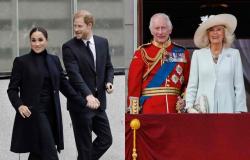There are those who protest in a photo, those who protest with a photo, those who protest against a photo.
Photography, in its intent to document and bear witness – we know – can hardly be neutral. The goal selects, and every selection it is already arbitrary, a stance, sometimes conscious and sometimes not. If we then talk about the reportage which has the protest as its subject, the matter becomes even more delicate. If there is protest, there is opposition: against a power, against an idea, against a law, against a political opponent, against a war, against a decision.
Does the photographer take sides? And with whom? It is good that it is clear, so that those who look at the images can take measurements, since they can orient opinions and judgements.
The subjects are those who protest, but if the photographer takes their side he protests, together with them. Some protest in the photos, the photographer “protests” with photos of those protesting. Then, sometimes, someone protests against a photo, perhaps suing the photographer.
There are many iconic examples throughout the history of photojournalism, and to name one emblematic one, exactly on June 5th aged 35 doesthe photograph was taken of the man who, alone, standing and still, challenges a column of tanks nearby Tiananmen Square in Beijing; this happened the day after the massacre of demonstrators, wanted by the Chinese government against which they had been protesting for days. The photo, published worldwide, is known as “The Unknown Rioter”, and remains unknown to this day. Many hypotheses have been made about his identity, even with real journalistic investigations, but no certainty has been reached; as we have no certainty about his fate. There are several versions of the image, the most widespread are those of photographers Stuart Franklin of Magnum, Jeff Widener of the Associated Press and Charlie Cole of Newsweek.
A photograph of that tragic event icon and documentbut to all intents and purposes a protest photo: the unknown rioter is a man protesting, a peaceful protest against the violence and blood of the previous days and more generally against the policy of that government.
Precisely for this reason I felt some discomfort, years later, when I saw this photograph again not in the newspapers, but rather perfectly framed with the author’s signature at the bottom and limited series number; I was at the fair Paris Photo and the image was offered at a high price by a gallery aimed at wealthy collectors. I don’t want to be a purist or nostalgic, I’m open to all the hybridisations and all the changes of skin and language inherent in the path of photography compared to its time, but here I perceived a short circuit: the subject of this photo, ultimately analysis, it is democracy, or its denial. The invention of photography was also one democratic revolution: finally there was a way to produce infinitely multipliable images, therefore with a diffusion within everyone’s reach (or almost).
Thus, finding myself with the struggle for democracy in Tiananmen Square reduced to a precious jewel for a few it shocked me. But forgive me, I am among those fools who delude themselves that reportage still has a role and it’s like a sort of vocation, forgetting that the publishing market is no longer willing to support and pay him, while the electricity bill wants to be paid: a photographer in the dark is a bad thing.
Other photographs of the revolt in Tiananmen Square can be found, in recent days, in an upcoming book which deals exactly with all this: it is no coincidence that the title is “W la Libertad. Protest photographs” (Postcart editions); the authors, Federico Montaldo and Luciano Zuccaccia, have collected a series of photographs accompanied by the authors’ testimonies or other documents that historically contextualize them by retracing their birth. The synopsis of the book, in fact, reads “22 stories of protest, told through the images of 22 photographers who, animated by passion, justice and hope, shed light on the darkness of exploitation, repression and violence, and contributed to giving visibility to the transformative power of collective resistance movements.”
On page 93, here are the photos of the students protesting in Tiananmen Square Dario Mitidieri, a well-known and talented Italian photographer. Only a few days later, in the same places and during the same events, the “unknown rioter” condensed that page of history into a gesture.
(Follow me on Facebook)






